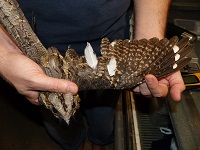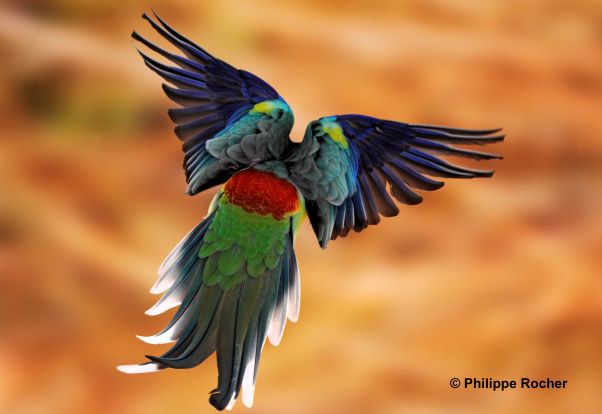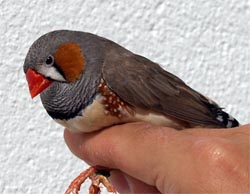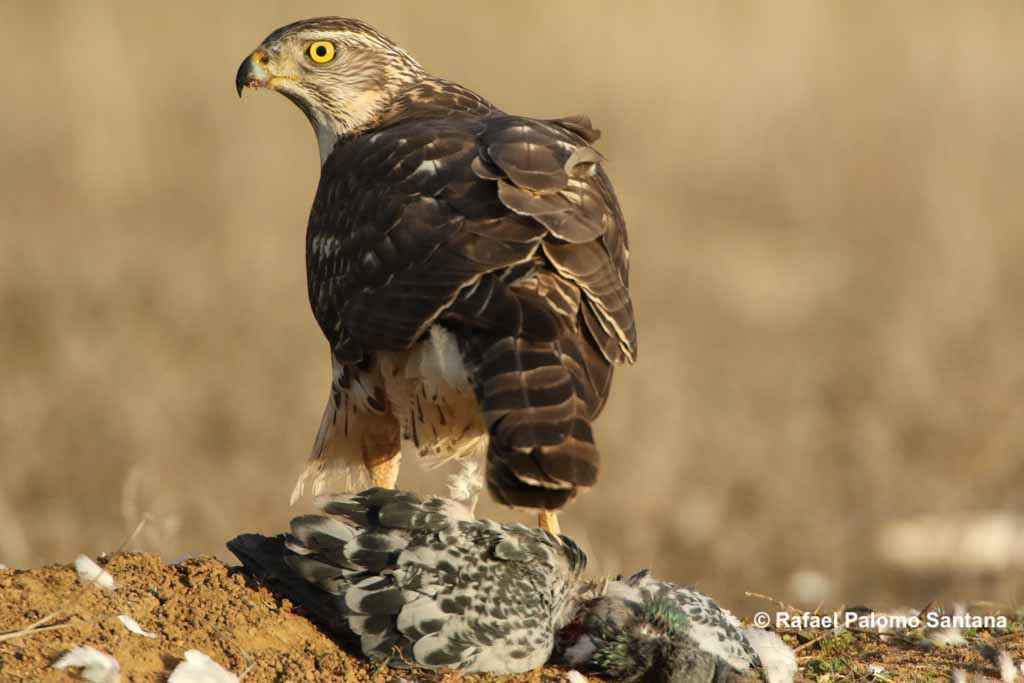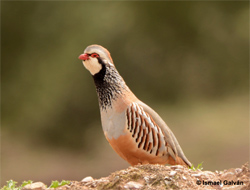The effects of aging deteriorate over time the functioning of the body and alter our external appearance. In mammals, the progressive hair graying is one of the most common manifestations of aging. However, the effects of this process in other animal groups are less evident for humans. A study led by a scientific team from CSIC shows that the graying process can also affect the feathers of birds.
The study, recently published in the journal Scientific Reports and carried out in the Doñana Natural Area, thoroughly documented over years the coloration changes in the feathers of a red-necked nightjar (Caprimulgus ruficollis), a nocturnal bird with a rufous plumage that depends on the camouflage to survive.
"The main objective of this study was to clarify the causes of the appearance of completely white feathers due to the absence of melanins", explain Carlos Camacho, lead author of this work and a researcher at the Ecological Pyrenean Institute (IPE-CSIC). The appearance of areas with no pigmentation on the skin, fur or plumage of animals, is technically known as "leucism", which is caused by genetic factors as well as physical traumas and environmental stress.
"We find extremely interesting to study phenomena related to aging in birds, since they behave in a different way from mammals. We can observe how our dogs and cats get old but, could someone ever recognize an old stork in the field?", points out Juan José Negro, coauthor of the study and a researcher at the Doñana Biological Station (EBD-CSIC).
The researchers examined more than a thousand nighjars. The first white feathers always appeared after the young phase, more frequent after they were five years old, equivalent to 35 years old in humans. As well as the white hairs, the same white feathers appeared year after year in those individuals that were repeatedly examined throughout their lives. However, not all the median-age birds have white feathers. This difference allowed the researchers to prove that the white feathers did not have effect over the camouflage and the survival of the nightjars. "This explains that the number of males with white feathers is similar to that of females, despite being more susceptible to predation due to incubation", explains Camacho.
Leucism is relatively frequent in urban birds. In natural areas, its frequency seldom exceeds 1% in natural areas. The frequency rises up to 3% in the nightjars living in Doñana, which is one of the highest rates for wild birds out of urban areas. "We don't know yet the causes of this high prevalence, although it may be related to the exposition to pesticides in areas near agricultural crops where nightjars forage", explains Juan José Negro.
Birds are fertile and reproduce until the end of their lives with no evident signs of senescence, although, as this study shows, their plumage could provide some hints. Leucism opens a window to the study of the aging processes in birds and could shed light on the causes of longevity variation in birds as well as humans.
Reference:
Camacho, C., Sáez-Gómez, P., Hidalgo-Rodríguez, P., Rabadán-González, J., Molina, C. & Negro, J.J. 2022. Leucistic plumage as a result of progressive greying in a cryptic nocturnal bird. Scientific Reports. https://doi.org/10.1038/s41598-022-07360-8
El artículo está disponible gratuitamente en www.nature.com/articles/s41598-022-07360-8
www.nature.com/articles/s41598-022-07360-8

 Las aves también peinan canas
Las aves también peinan canas